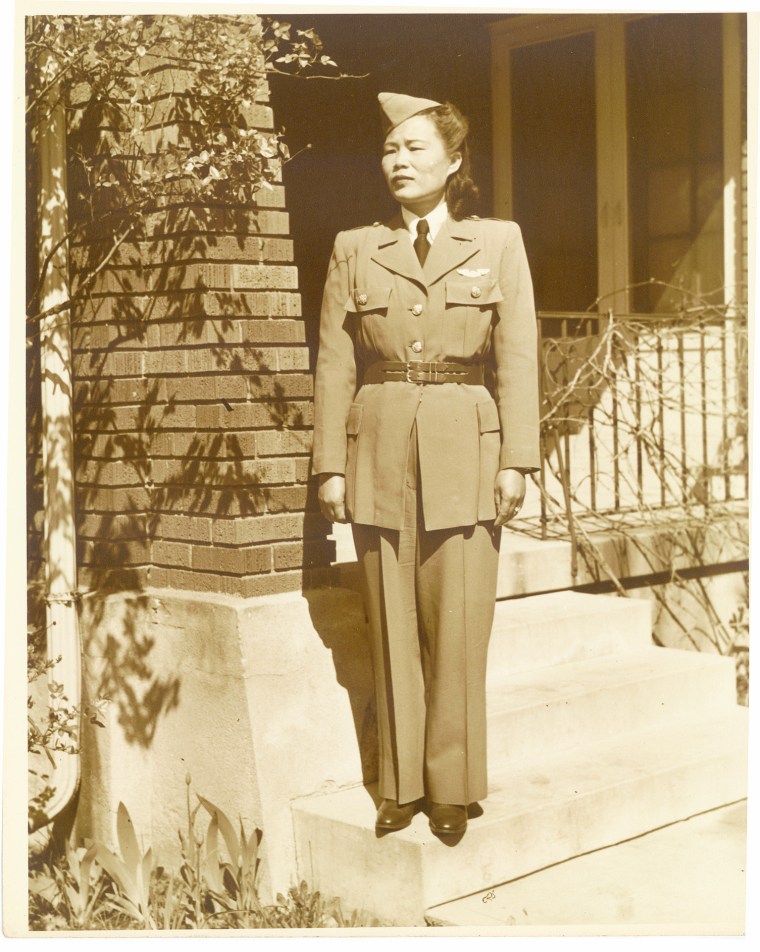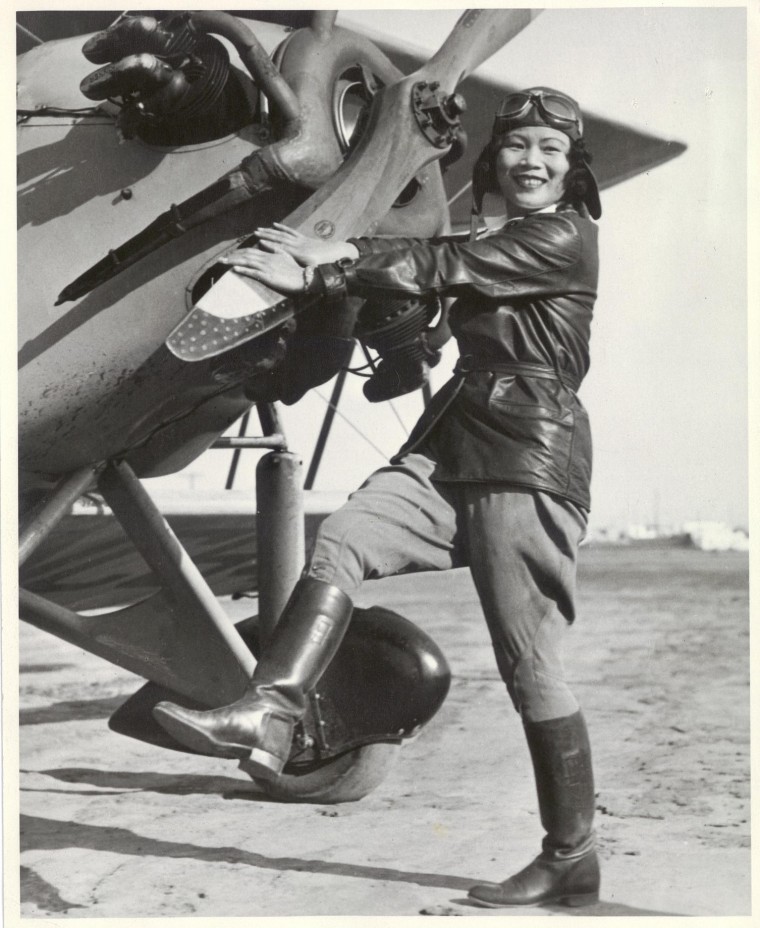It was while researching for a story more than a decade ago that Ed Moy first learned about pilot Katherine Sui Fun Cheung, one of the first Chinese pilots in the United States.
“I was a journalist and I wrote a magazine article and I came across her name,” Moy told NBC News. “I knew a little about these Chinese-American pilots and then in 2012, the East West Players did a play about Katherine called ‘Taking Flight.’ I thought, ‘This is fun. I should do something about her.’’
“She tried to get a flight instructor’s rating at the height of World War II and a lot of the Chinese pilots were being singled out at that time. She was denied three times and the FAA documents from that time were kind of murky."
That began Moy’s journey into tracing the life and career of Cheung, a project that resulted in the release of the new documentary “Aviatrix: The Katherine Sui Fun Cheung Story,” which will screen at the the Chinese Historical Society Museum Learning Center in San Francisco on May 13.
Born in Guandong Province in 1904, Cheung moved to California with her family at the age of 17 to study music. According to Moy, she became fascinated with flying when her father began teaching her how to drive near an airfield, where she would see nearby airplanes land and take off. “From that day on, she had this dream of being a pilot,” Moy said.
About a decade later in the early 1930s, Cheung would go on to become the first licensed Chinese female pilot and would join the Ninety-Nines, a flying club for women founded by Amelia Earhardt, shortly thereafter, according to research by Moy. She would make a name for herself as a popular barnstorming pilot who drew crowds across the country eager to watch her do aerial stunts like spiral dives and barrel rolls. Her love of stunts and flying coincided with an era in which pilots were often regarded as celebrities, according to Moy.

“Aviation was a relatively new thing in the 1930s and at that point it was still this exciting new thing. The country had just come out of World War I and the Roaring '20s and it was this daredevil sport,” Moy explained. “It was like the circus had come to town.”
While Cheung, who was by then a married mother of two, was the first Chinese woman to become a pilot, she was not the only Asian-American woman pilot of that era. Cheung and pilots like Hazel Ying Lee — who would go on to become the first Chinese-American woman to fly for the U.S. military — came of age during an era of heightened tensions between China and Japan. Because of this, many Chinese businessmen funded flying clubs across the United States, in the hopes that young Chinese Americans would learn to pilot airplanes and then return to China to assist with the war effort, Moy said.
“They were very lucky. A lot of Chinese Americans were flocking to flying clubs,” he said of Cheung and the other Chinese-American aspiring pilots. “There was a Chinese Benevolent Society, which was basically Chinese business people who pooled their money to buy a few planes. Katherine was one of the only women allowed to fly.”
Moy noted that if not for the support of these Chinese benevolent societies, it was unlikely that Cheung or most of the other Chinese-American pilots would have been able to fund their training or have access to an airplane due to both financial issues and the prevalent racism of the era. The typical civilian pilot was more like the reclusive millionaire Howard Hughes, than a Chinese American with immigrant parents, according to Moy. While Cheung’s father was a successful produce buyer for markets in Los Angeles’ Chinatown, many of her classmates came from more middle class backgrounds.
"Aviation was a relatively new thing in the 1930s and at that point it was still this exciting new thing. The country had just come out of World War I and the Roaring Twenties, and it was this daredevil sport."
But while Cheung, who died in 2003 at the age of 98, loved to fly and fulfilled a lifelong dream by obtaining her pilot’s license, her career was ultimately only about a decade long due to two factors. The first was that her father became increasingly worried about her. “He got sick and asked her to stop flying,” said Moy. “And she did.”
The second was that, while she longed to become a flight instructor and talked of returning to China to teach flying there, she was never able to get certified as a flight instructor.
“She tried to get a flight instructor’s rating at the height of World War II and a lot of the Chinese pilots were being singled out at that time,” Moy said. “She was denied three times and the FAA documents from that time were kind of murky. The ones we were able to obtain said she wasn’t ‘allowed’ to get it.”
Cheung’s last recorded flight was in 1944.
“My opinion [on why Cheung wasn’t permitted to become an instructor] was because it was World War II, and a lot of Americans were afraid of Asian Americans at the time,” Moy said.
Follow NBC Asian America on Facebook, Twitter, Instagram and Tumblr.
